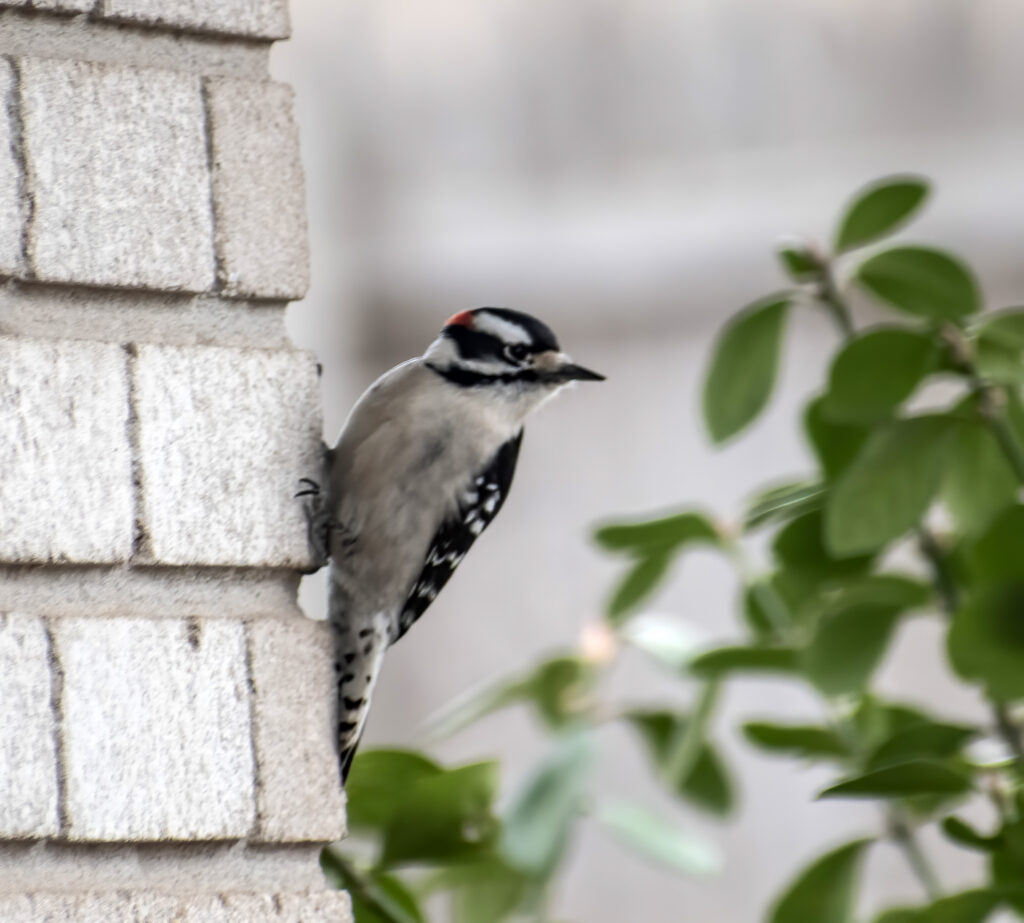by Grace Huffman

Downy Woodpeckers are small birds, only a little bigger than House Sparrows, common in wooded areas and backyards with trees. Males are easily identified by a bright red spot on the back of their head, while females don’t have any red at all. They are nearly identical to the Hairy Woodpecker, but Hairies are bigger with a longer bill. Downies also have some black barring on their white tail feathers, while Hairy Woodpeckers do not.
Another way to tell them apart is by their sound. I often hear Downy Woodpeckers before I see them, so listen for their sharp whinny that descends at the end. You might also hear their “keek” calls. Hairy Woodpeckers also whinny, but theirs does not descend, and their “peek” calls are lower that that of the Downy. I also have noticed that Hairies seem to be much shyer and less common, as I’ve only ever seen them locally at Martin Nature Park, whereas I see Downies just about every time I go out.
If you want to attract them to your yard, a good place to start is by offering suet and black oil sunflower seeds. And if buying just black oil sunflower seeds is too expensive, buy a bag of mixed seed to add in and stretch the sunflower seeds out. I offer seeds more than suet as the squirrels love the suet as much as the woodpeckers, and my seed feeders are either squirrel proof or hard for the squirrels to get too. Surprisingly, the Downies don’t seem to mind, dashing in to grab a seed and then taking it to a tree where they can wedge the seed into the bark to smash it open. According to allaboutbirds.org, they enjoy peanuts, peanut butter, and millet in addition to suet tank sunflower seeds. They have also been known to drink out of hummingbird and oriole feeders!
If it’s safe to do so, leave up dead trees and branches to provide them with food (insects are drawn to the rotting wood) and places to create their nest holes, where they’ll lay their 3-8 eggs in the spring. The eggs will be incubated by both parents for about 12 days, and then they will feed the babies for about 3 weeks until they fledge.
While replacing wooden fence poles with metal ones has taken away some nesting options for Downy Woodpeckers, they are still thriving, as clearing away trees has created younger forests for the Downies to live in. And because of that they are often one of the first woodpeckers a new birder sees, and I certainly find them one of the most fun to watch.
(Information drawn mainly from allaboutbirds.org)
